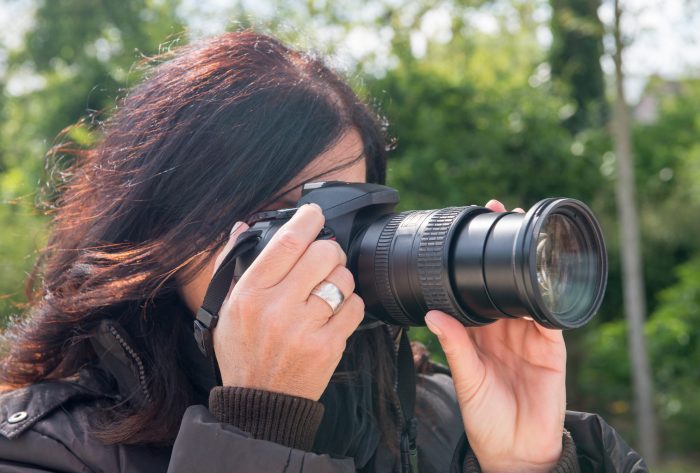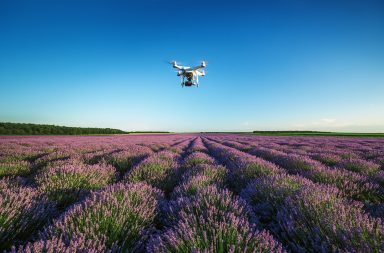Automatic options in our modern-day cameras have made us pretty lazy. We often aren’t even aware of all the possibilities and what we’re missing out when we let the camera decide for us. It’s always easier to turn on the autopilot and roll, letting the camera do our bidding. The same happens with focusing.
“When a regular camera focuses physically, what the regular camera is doing is adjusting the lens relative to the sensor to bring different parts of the scene into focus.” – Ren Ng
Your focus is often what tells the story. Sometimes, your goal will be pretty obvious to the camera, and it will autofocus on just the right thing you want to emphasize. Other times, it will completely miss your point – even though most of our cameras are smart, they still lack the conceptuality and imagination of our brains.
Imagine, for example, a nature scene with a branch full of withered leaves in the forefront of your frame. In the background, there is a forest path with some brown gunk splattered all over. If you shoot on autofocus, your camera’s algorithm will probably choose to focus on the leaves, while blurring the path. And there’s nothing inherently wrong with that – it might still make for a nice image.
But maybe the path tells a more interesting story. The brownish substance may be a chemical that caused the plants to shrivel and waste away. You may want to focus on it to capture our impact on the environment. As a rule of thumb, your camera will pick the most obvious or the biggest thing, or whatever is standing at the front or at the center of your frame.
To prevent that, you will have to focus manually by twisting the focus ring on your lens. And to do that right, you will need a lot of practice and experimenting, since manual focus depends on your skills as well as your camera’s features and properties.
Manual Focus: 6 Advantages and When to Use It
Let’s start with a tip that will make your life easier when using manual focus. Don’t look through the viewfinder – it’s far too small to allow you to choose your subject. Instead, turn on the Live View mode. With most DSLR cameras, you will be able to zoom in and get full control over the contents of your frame. And full control is what manual focusing is all about.
Now, here’s a list of situations when manual work will bring great results.
- Portraits. Portrait images will often get printed in very high resolutions, which means your focus needs to be accurate. However, it can be hard to achieve perfect sharpness while you’re juggling the focus ring on your lens, so it’s highly recommended to use a tripod.
- Macro photography. It’s when you get super close to your object or zoom in heavily in order to capture the tiniest details. In these situations, it’s better to focus manually, since you’ll want to customize and define your focal point. With autofocus, you will have to rely on your camera’s evaluation of the scene, which is not always a good idea. Note that you will want to use a monopod or a tripod in these situations, since you need to be extra stable and calm.
- Shooting in the dark. The autofocus feature tends to get pretty confused when it’s dark, unless there are visible bright spots that it can cling on. But if the scene is just plain dark, you will need a wide angle lens with wide aperture and manual focus to point into your subject or the distance. You will be surprised with the result – even if it’s far from perfect (which frankly depends on your camera’s quality), it will be much better than with autofocus.
- Not enough contrast. The subject can sometimes have similar colors or textures to its background or objects standing in between it and the camera. Most of the times it happens, the autofocus will get confused and not be able to focus properly.
- Shooting through objects such as glass or fence. Obviously, you don’t want the glass or wire on the fence to be your subject. You want your camera to see through them and focus on what’s behind.
- Dynamic scenery. When you master manual focus, one of its main advantages over autofocus will be speed. Letting your camera autofocus can take some time because it’s simultaneously trying to sharpen, and all of us know how important is to snap the exact moment that will disappear in a second or even less. To prevent this, try prefocusing such that you lock in on a spot where your subject will eventually move through.
When to Switch to Autofocus
Let’s not look down on this convenient feature available on almost every camera or smartphone. I won’t lie to you – I use it pretty often. If you are a newbie photographer, you will probably find it useful to always try autofocus first, and use manual focus only if the first one doesn’t produce a good result.

Generally, there are many types of autofocus and their names will depend on the type and quality of your camera. But it mostly boils down to two types, and both work by holding your finger halfway the shutter button.
- Continuous autofocus. It’s typically used for shooting fast moving objects such as sportists or running animals. The autofocus will keep hunting your moving subject.
- Single autofocus. It will choose your object and lock in on it. To choose another object, you can refocus by letting go of the shutter button and pressing it halfway again.
Final Verdict
The purpose of this article isn’t to persuade you to forget about your camera’s automatic features. We live in a user-friendly age. If that didn’t have great advantages, many of us (including yours truly) wouldn’t be here teaching ourselves and each other about photography in the first place.
“Photography was a way for me to freeze time and to capture the moments that were happy and healthy. I saw a photo as a way to go back to a memory if I ever needed to.” – Rachel Morrison
The purpose is rather to explain that manual features shouldn’t be forgotten or underestimated. By using manual focus, you will gain a ton of experience and knowledge, applicable to many other issues in photography. And you will eventually capture some brilliant shots along with many unsuccessful ones.


